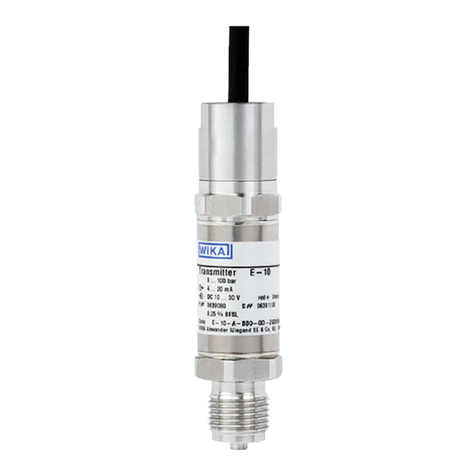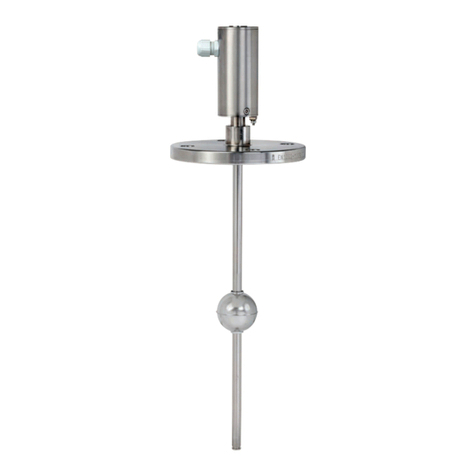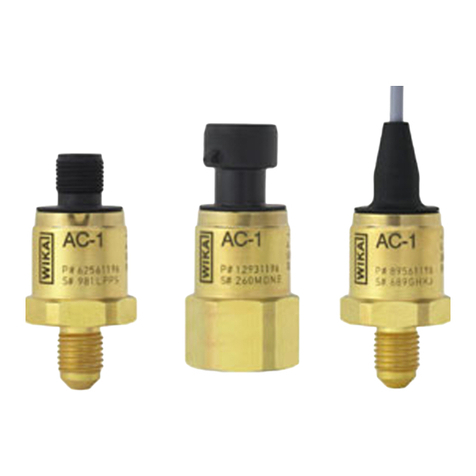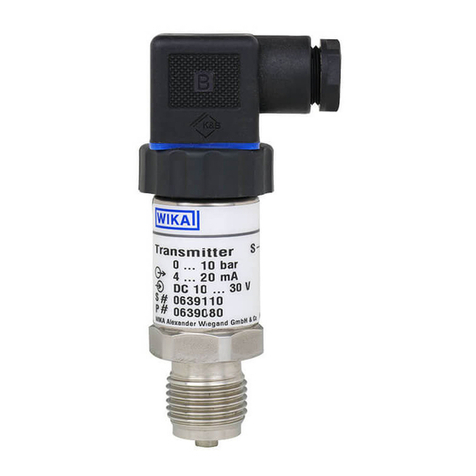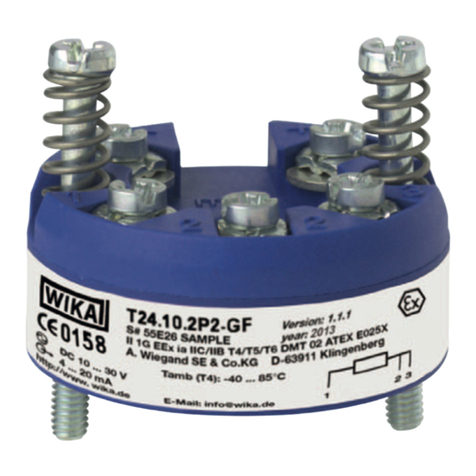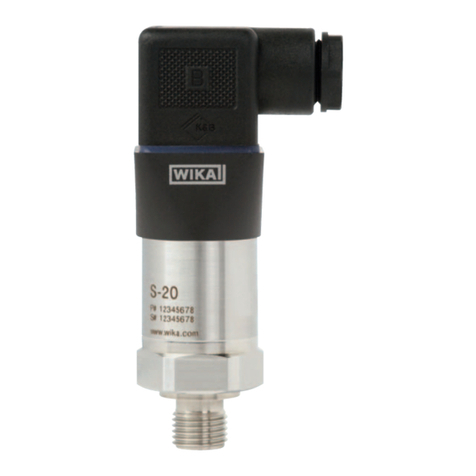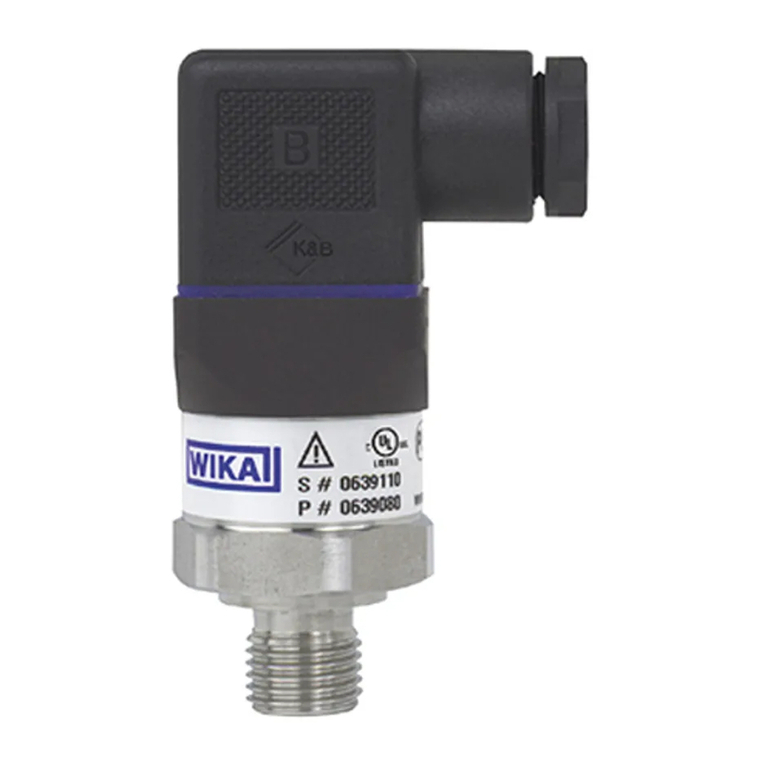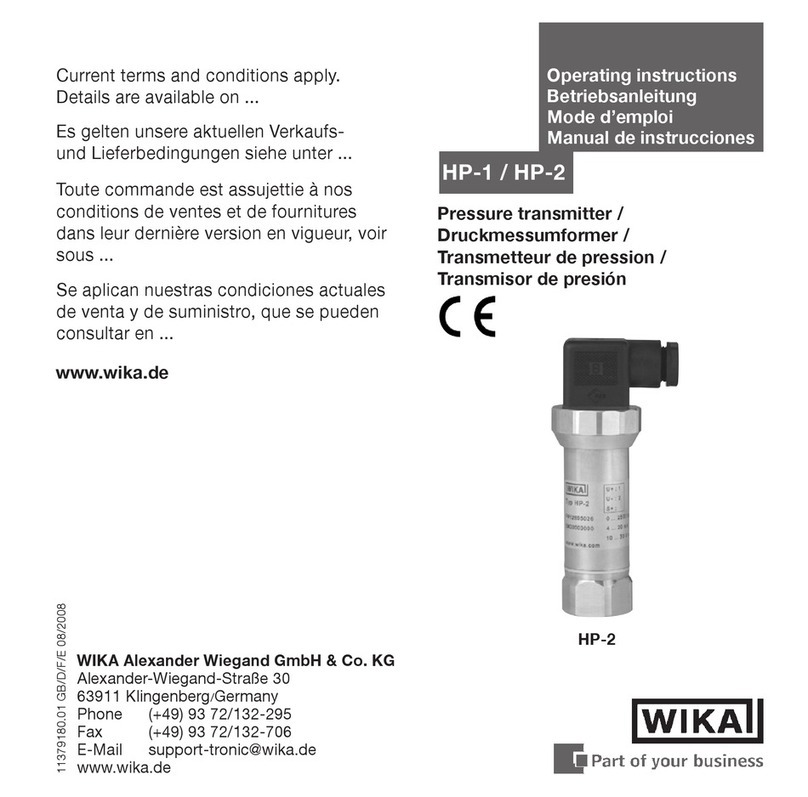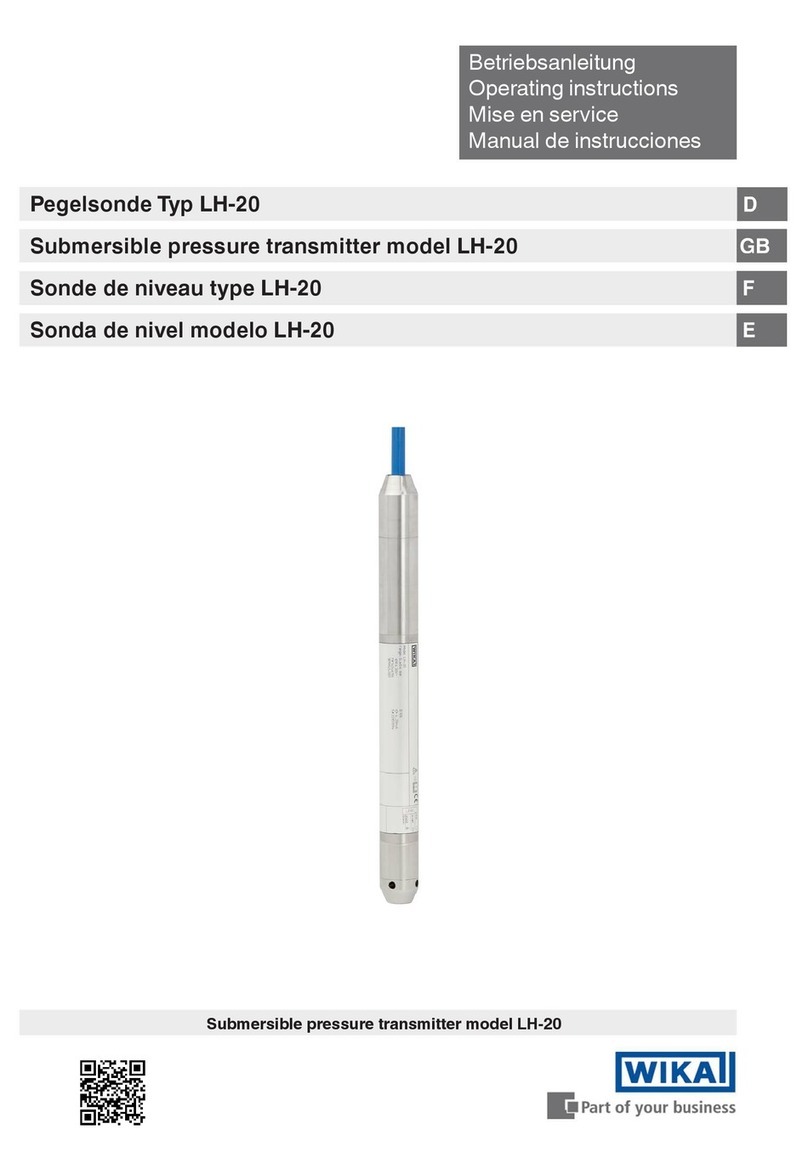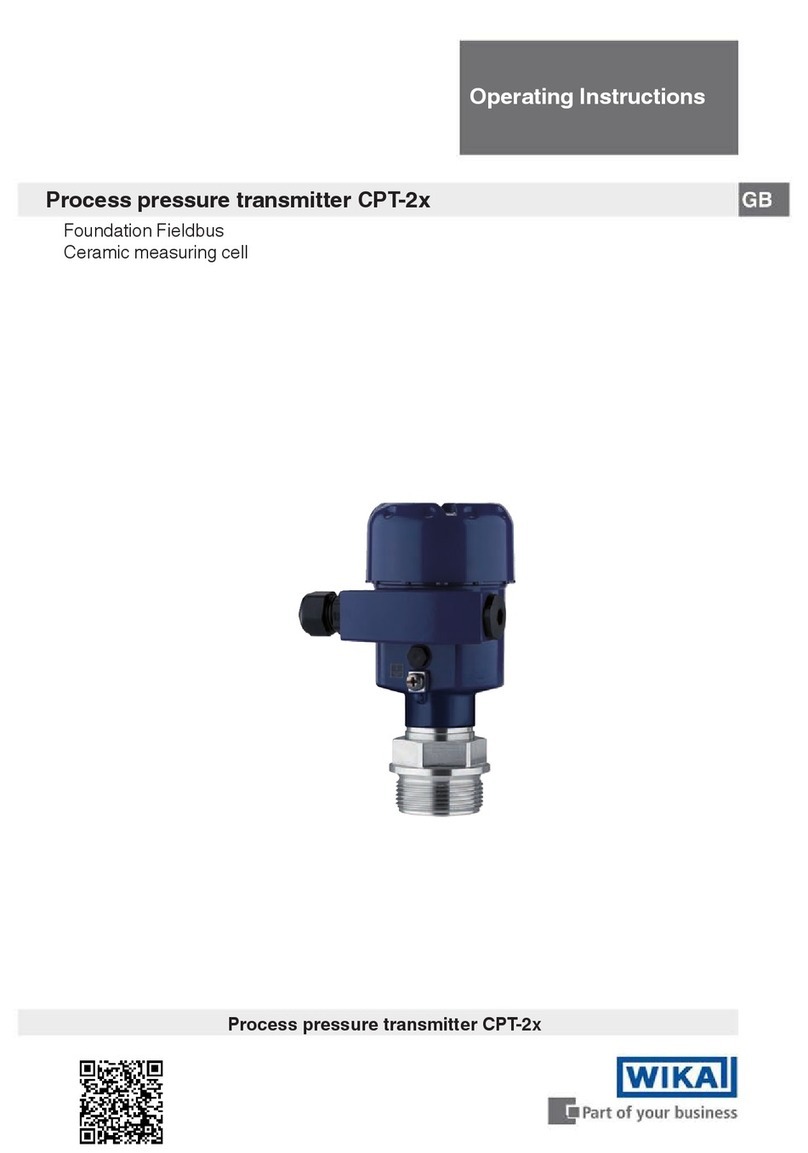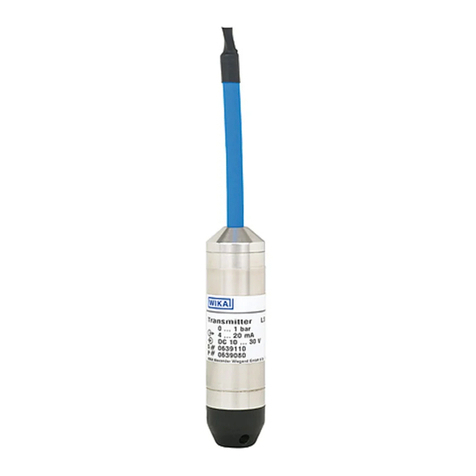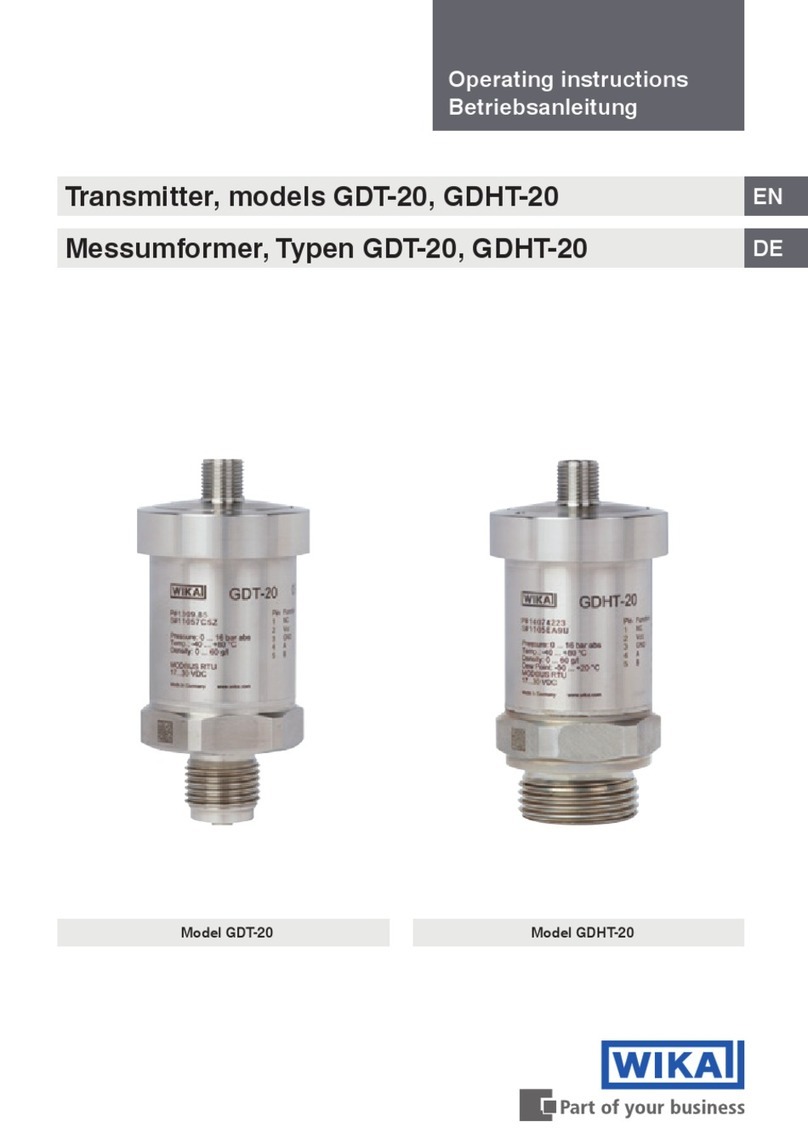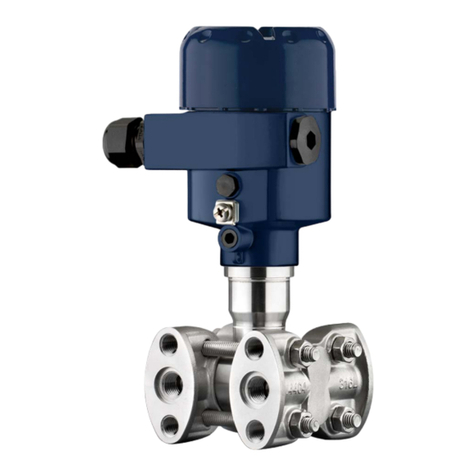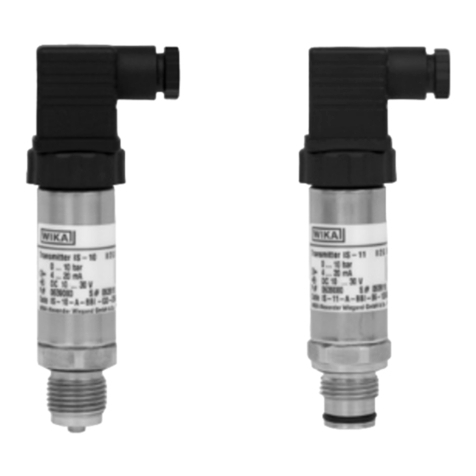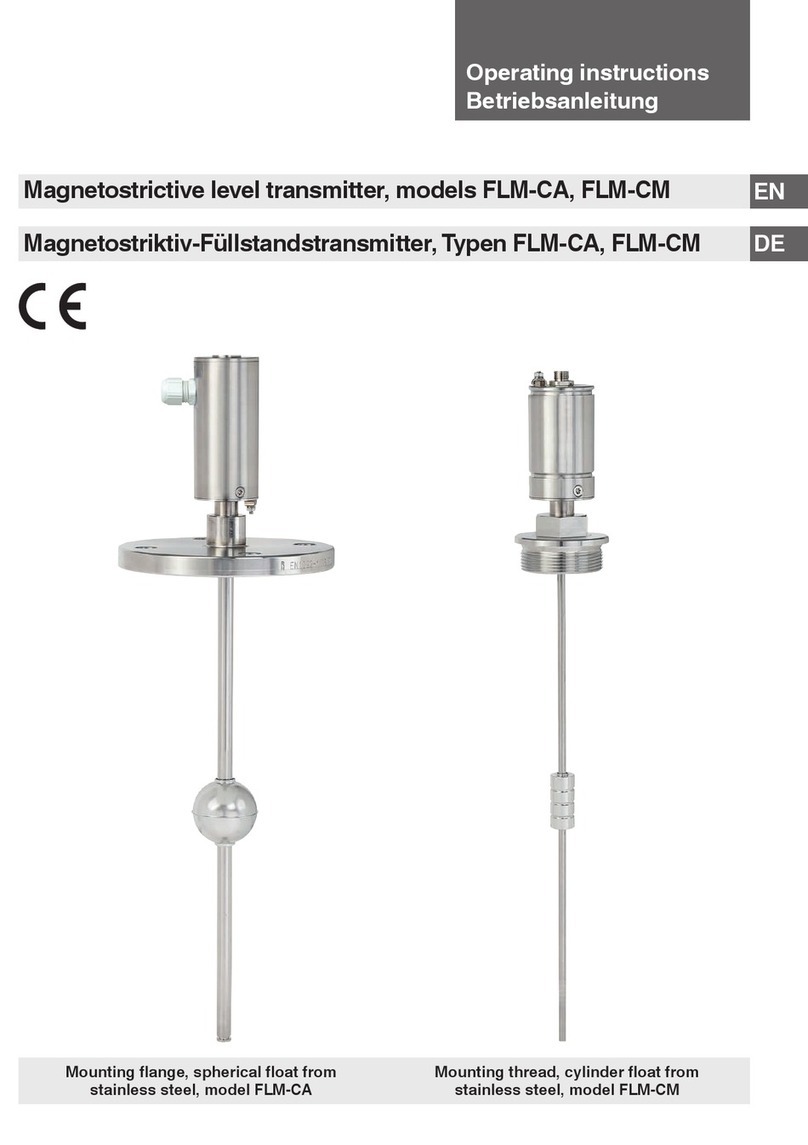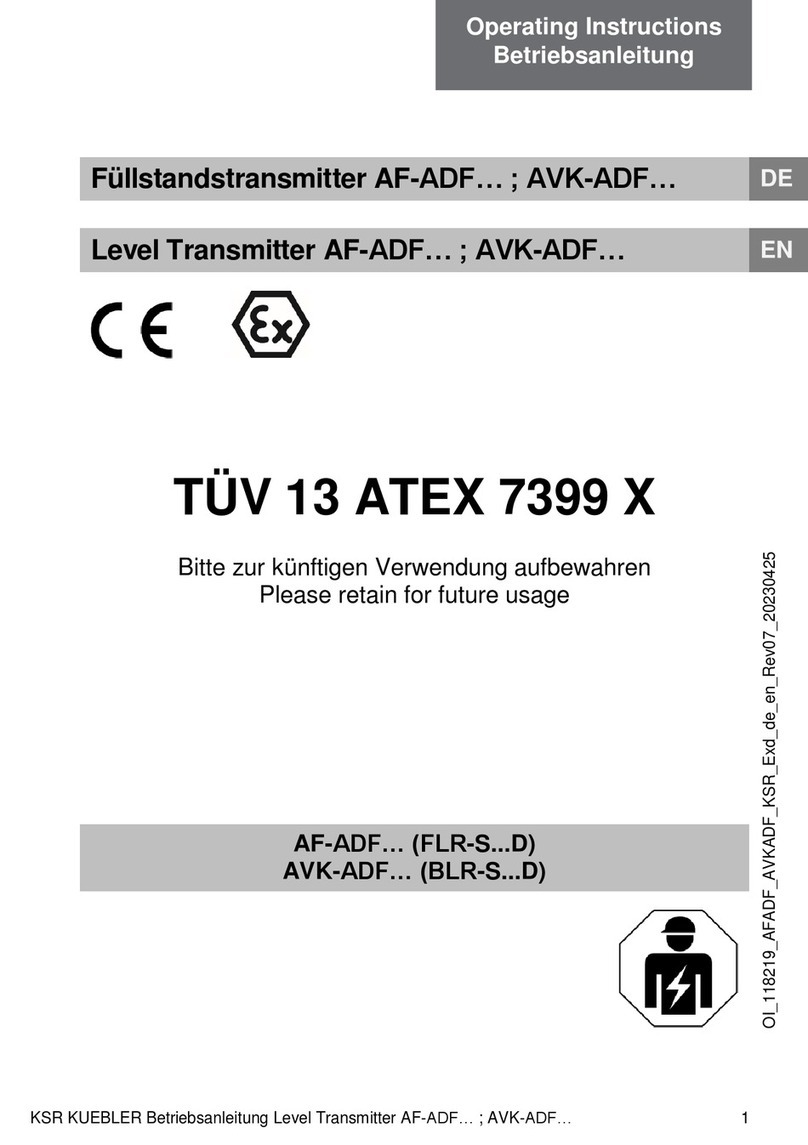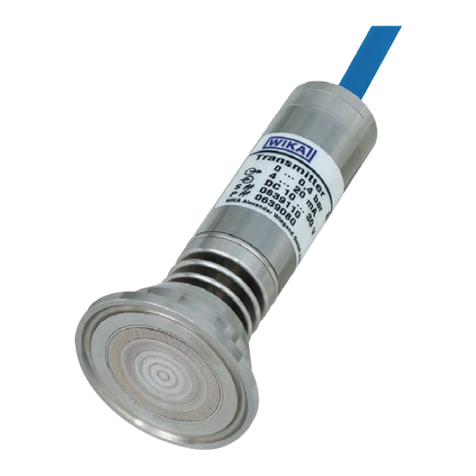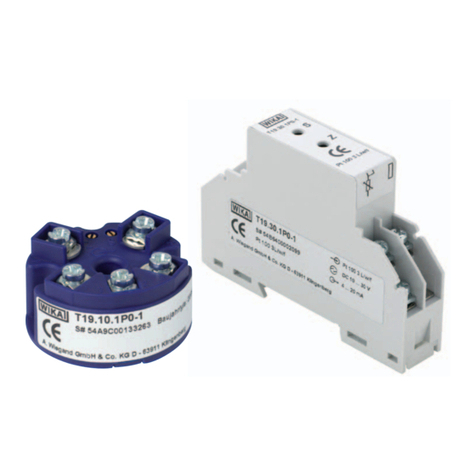
1604457.09 GB/D/F 02/2006
17WIKA Operating instructions / Betriebsanleitung / Mode d'emploi S-10, S-11
1604457.09 GB/D/F 02/2006
16 WIKA Operating instructions / Betriebsanleitung / Mode d'emploi S-10, S-11
3. Zeichenerklärungen, Abkürzungen / 4. Funktion und Zubehör D
2-Leiter Zwei Anschlussleitungen dienen zur Spannungsversorgung.
Der Speisestrom ist das Mess-Signal.
3-Leiter Zwei Anschlussleitungen dienen zur Spannungsversorgung.
Eine Anschlussleitung dient für das Mess-Signal.
UB /Sig Positiver Versorgungs- / Messanschluss
OV/Sig- Negativer Versorgungs- / Messanschluss
FDA Food and Drug Administration
Funktion: Mit dem Druckmessgerät messen Sie den in Ihrer Anwendung anstehenden Druck,
der in ein elektrisches Signal umgewandelt wird. Dieses elektrische Signal verändert sich
proportional zum Druck und kann entsprechend ausgewertet werden.
Zubehör: Hinweise zu Zubehör entnehmen Sie bitte der WIKA-Preisliste, dem WIKA Product
Catalog auf CD-Rom oder unserer Internet-Seite unter www.wika.de. Hinweise zu Dichtungen
entnehmen Sie bitte unserer Information Zubehör Dichtungen AC 09.08 im Gesamtkatalog
Druck- und Temperaturmesstechnik oder unserer Internet-Seite unter www.wika.de.
4. Funktion und Zubehör
S-10: Druckanschluss Standardausführung.
S-11: Druckanschluss mit frontbündiger Membrane für hochviskose oder kristalli-
sierende Medien, die die Bohrung des Druckanschlusses zusetzen können.
Hinweis, wichtige Information,
Funktionsstörung.
Das Produkt stimmt mit den
zutreffenden europäischen
Richtlinien überein.
Vorsicht
Mögliche Gefahr von
Verbrennungen durch heisse
Oberflächen.
Spannungsversorgung Verbraucher
1.Wichtiges zu Ihrer Information / 2.Schneller Überblick D
arnung
Mögliche Gefahr für Ihr Leben
oder schwerer Verletzungen.
arnung
Mögliche Gefahr für Ihr Leben
oder schwerer Verletzungen
durch wegschleudernde Teile.
!
2. Der schnelle Überblick für Sie
Wollen Sie sich einen schnellen Überblick verschaffen, lesen Sie Kapitel 3, 5, 7 und 10. Dort
erhalten Sie kurz Hinweise zu Ihrer Sicherheit und wichtige Informationen über Ihr Produkt
und zur Inbetriebnahme. Lesen Sie diese unbedingt. Informieren Sie sich detaillierter über
dieses Produkt in Kapitel 4 Funktion und Zubehör und 6 Verpackung. Lesen Sie Kapitel 8
zum Thema Wartung. Bei Auftreten von Störungen lesen Sie bitte im Kapitel 9 weiter.
1. ichtiges zu Ihrer Information
Lesen Sie diese Betriebsanleitung vor Montage und Inbetriebnahme des Druckmessgerätes.
Bewahren Sie die Betriebsanleitung an einem für alle Benutzer jederzeit zugänglichen Ort auf.
Die nachfolgenden Einbau- und Betriebshinweise haben wir mit Sorgfalt zusammengestellt. Es
ist jedoch nicht möglich, alle erdenklichen Anwendungsfälle zu berücksichtigen. Sollten Sie
Hinweise für Ihre spezielle Aufgabenstellung vermissen, können Sie über unsere Internet-
Adresse (www.wika.de / www.wika.com) weitere Informationen (Datenblätter, Hinweise, etc.)
erhalten oder sich mit einem unserer Anwendungsberater in Verbindung setzen (siehe Punkt 7
Inbetriebnahme, Betrieb/ Rückfragen).
Das zugehörige Produkt-Datenblatt hat die Bezeichnung PE 81.01
Bei Sondertypennummer, z. B. S-10000 oder S-11000, bitte Spezifikationen gemäß Liefer-
schein beachten.
Die in der Betriebsanleitung beschriebenen WIKA-Druckmessgeräte werden nach den neue-
sten Erkenntnissen konstruiert und gefertigt. Alle Komponenten unterliegen während der
Fertigung strengen Qualitätskriterien.
Bestimmungsgemässe Produktverwendung S-10, S-11
Verwenden Sie den Druckmessumformer zum Messen von Druck.
3. Zeichenerklärungen, Abkürzungen
Ihre erforderlichen Kenntnisse
Montieren und nehmen Sie das Druckmessgerät nur in Betrieb, wenn Sie mit den zutreffenden
landesspezifischen Richtlinien vertraut sind und die entsprechende Qualifikation besitzen. Sie
müssen mit den Kenntnissen von Mess- und Regeltechnik sowie elektrischen Stromkreisen
vertraut sein, da das Druckmessgerät ein elektrisches Betriebsmittel nach EN 50178 ist. Je
nach Einsatzbedingung müssen Sie über entsprechendes Wissen verfügen, z. B. über
agressive Medien.
Das Produkt wurde durch
CSA International geprüft und
zertifiziert. Es stimmt überein mit
den anwendbaren kanadischen
Normen zur Sicherheit.







